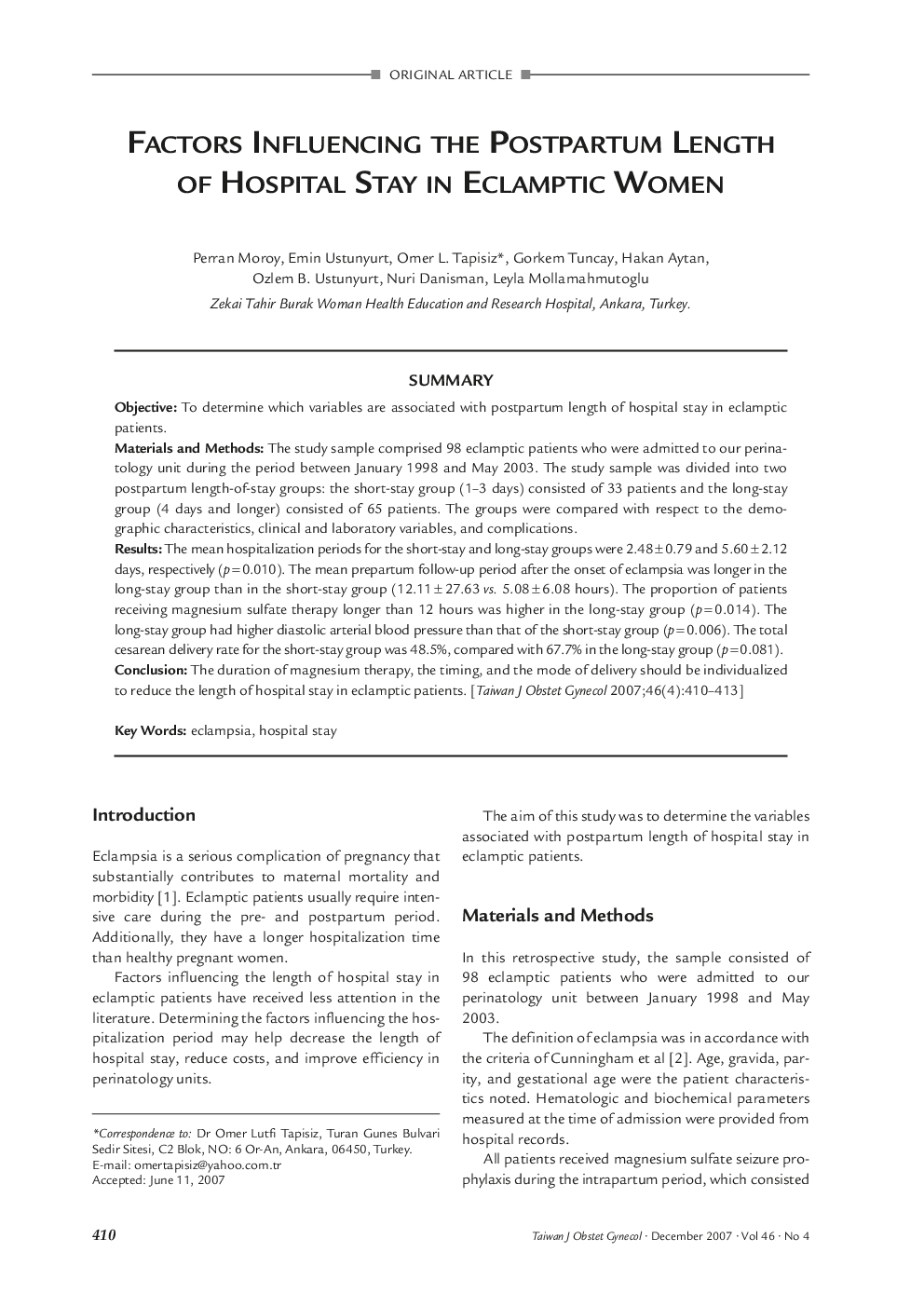| Article ID | Journal | Published Year | Pages | File Type |
|---|---|---|---|---|
| 3976072 | Taiwanese Journal of Obstetrics and Gynecology | 2007 | 4 Pages |
SUMMARYObjectiveTo determine which variables are associated with postpartum length of hospital stay in eclamptic patients.Materials and MethodsThe study sample comprised 98 eclamptic patients who were admitted to our perina-tology unit during the period between January 1998 and May 2003. The study sample was divided into two postpartum length-of-stay groups: the short-stay group (1–3 days) consisted of 33 patients and the long-stay group (4 days and longer) consisted of 65 patients. The groups were compared with respect to the demographic characteristics, clinical and laboratory variables, and complications.ResultsThe mean hospitalization periods for the short-stay and long-stay groups were 2.48 ± 0.79 and 5.60 ±2.12 days, respectively (p=0.010). The mean prepartum follow-up period after the onset of eclampsia was longer in the long-stay group than in the short-stay group (12.11 ±27.63 vs. 5.08 ± 6.08 hours). The proportion of patients receiving magnesium sulfate therapy longer than 12 hours was higher in the long-stay group (p = 0.014). The long-stay group had higher diastolic arterial blood pressure than that of the short-stay group (p=0.006). The total cesarean delivery rate for the short-stay group was 48.5%, compared with 67.7% in the long-stay group (p=0.081). Conclusion: The duration of magnesium therapy, the timing, and the mode of delivery should be individualized to reduce the length of hospital stay in eclamptic patients.
